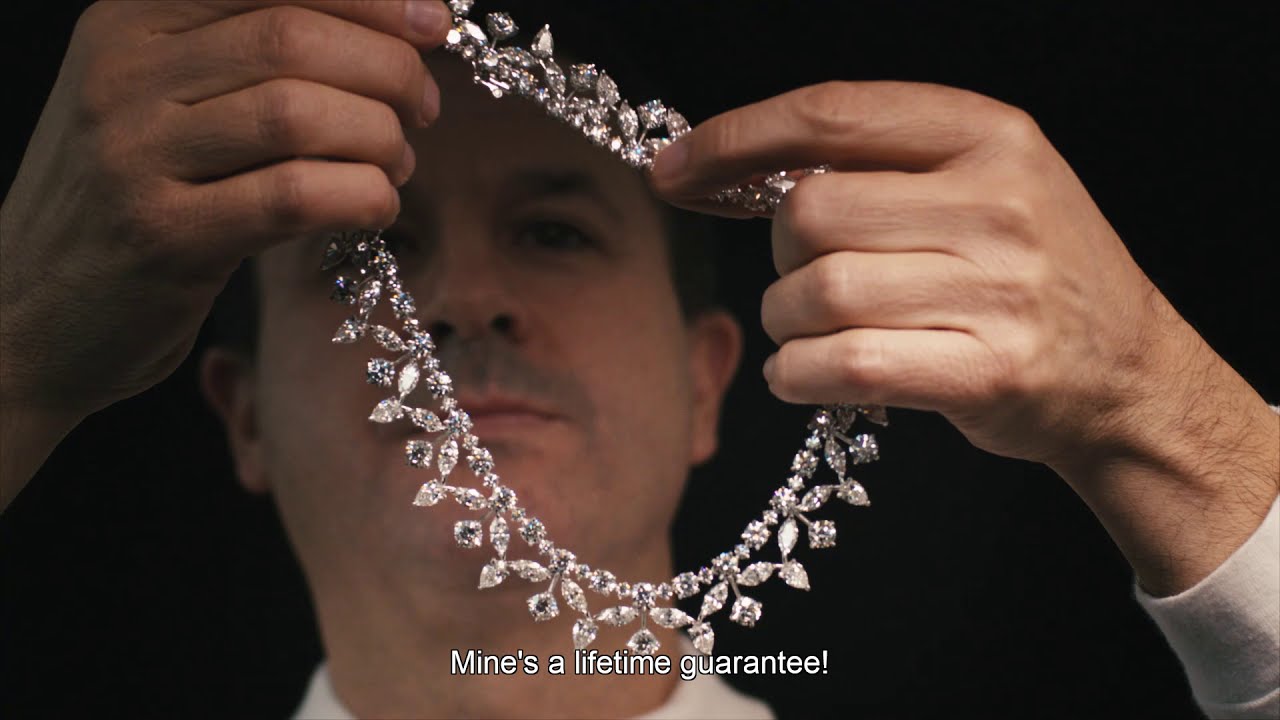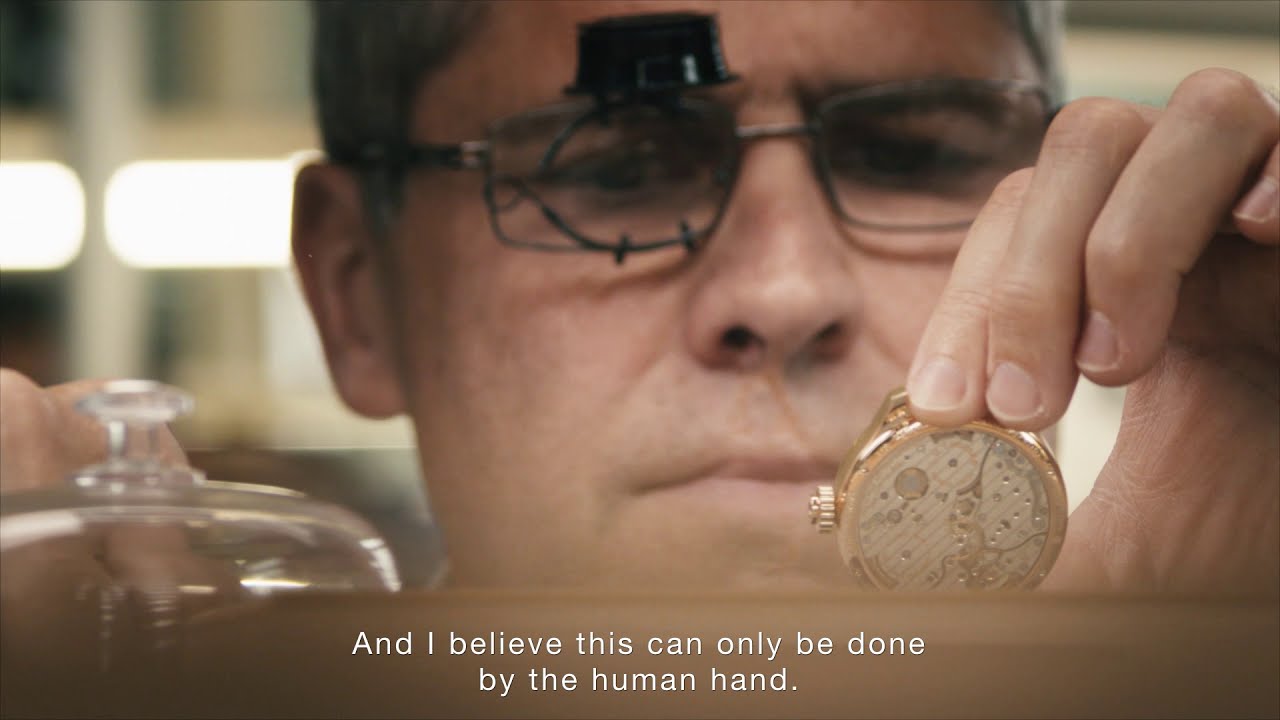Few Maisons can claim complete control of all watchmaking and jewellery professions. Chopard is one of these select few. Thanks to its skilful Artisans, experts in their respective fields, Chopard workshops are home to a full range of talents giving rise to the most complex watches and the most extraordinary jewellery. Today we present you the Artisan Gemsetter and the Watchmaker of Grand Complication. The first part is available here and the second part here.

Carlos: Artisan Gemsetter
The art of ennobling precious stones

Carlos, an Artisan gemsetter at Chopard, is a magician. He is capable of marrying stones with gold, platinum or titanium, without anyone really grasping how it’s done… Precious metals are dedicated to serving these gems, supporting and magnifying them and the two are inseparably bound together. The alliance between the twain is sealed through binoculars, in the silence of a Geneva workshop. Endlessly repeated operations that are nonetheless always different, as each stone proudly displays its uniqueness.

An Haute Joaillerie creation would not exist without these precious stones that give it brilliance, light, colour – and above all precious value. And these same gems cannot become a piece of jewellery without an underlying structure. In order to give the best of themselves, they must be set in the most subtle possible way. Precious metal, whatever its nature, is like the frame of an architectural work: it supports the whole by balancing forces, while remaining almost invisible. It must increase the brightness of the stone, while remaining discreetly in the background, as if the gems were particles of beauty floating in mid-air. At the end of the day, gemsetting is the art of mastering extremes: hovering between solid support and carefree abandon, between strength and lightness. An exquisite paradox.

Master Artisan gemsetter, Carlos, works in a dedicated part of the Haute Joaillerie workshops. The gemset timepieces and the Haute Joaillerie sets bearing the Chopard signature all pass through the hands of this artist whose heart beats faster at the sight and touch of precious stones.

Gemsetting is also a form of sculpture, a high relief effect that emerges from a noble material such as the finely worked gold or platinum which plays the role of holding the gem in place. There are many techniques for setting stones: prong setting in which the gem is clamped between several precious metal rods; bezel setting where the gem is held by a metal belt; invisible setting that lives up to its name in that the metal disappears to make way for the stone… Or magic setting, which Chopard invented to further exalt precious stones. In the watchmaking world, pavé setting, channel setting and snow setting – which are less liable to retain micro-particles – are used instead.

Another of Chopard‘s signature techniques is dropped setting, an ancient technique that the House has updated, and which consists in setting the stones using successive rounded borders, cut directly from the metal with gravers and bent back over the gems. This is a form of setting that requires great mastery, since too much material conceals the stone, while not enough enables it to escape.

Gemsetting is an art of patience, meticulous care and self-control. Precisely the qualities acquired by Chopard through his many years of experience. “All the stone varieties that pass through my hands have their specificities and it is only thanks to experience that I am able to deal with each one without breaking or damaging it. It’s a daily challenge, and you can never pretend to know how to do everything. But thanks to our passion, we create beauty” he says. When he is dealing with stones of fragile beauty, an emerald weighing several dozen carats or a Paraiba tourmaline whose blue colour rivals that of lagoons, you need the kind of dexterity that can only be acquired after decades of training to be able to set them without squeezing too hard. Too much pressure can shatter the gem. When looking at jewellery adorned with precious and fine stones, one might be tempted to take its beauty for granted. And yet, however invisible the gemsetting work may be, one is in fact contemplating the work of a virtuoso.

Christophe: Grand Complication Watchmaker
Assembling the L.U.C Full Strike: the heart of the mystery behind the crystal-clear note

It is in Chopard’s Geneva workshops that the 533 components composing the L.U.C Full Strike timepiece are assembled. Only three watchmakers, including Christopher – an Artisan at Chopard since 1998 – are capable of giving life to this unique minute repeater that chimes the time, quarters and minutes on its crystal gong. A backstage look at this admirable feat.

Chopard’s Grand Complications workshop in Geneva is the scene of some dizzying statistics: 17,000 hours of development time to develop the L.U.C 08.01-L calibre powering the L.U.C Full Strike; 533 components; 160 hours of assembly time; 20 years of training to become a watchmaker capable of assembling this Grand Complication; three watchmakers dedicated to minute repeaters; five patents filed; one L.U.C Full Strike timepiece assembled per month and per watchmaker.

There are many minute repeaters, but none like the L.U.C Full Strike timepiece. In general, the gongs struck by the hammers sounding the hours, quarters and minutes are composed of gold or steel wires. But the one inside the Full Strike L.U.C. is made of sapphire crystal, hence its unique, crystalline sound.

Each gong is machined together with the glass protecting the movement, in a single block of sapphire. Since this component – which plays an amplifying role requires no gluing or welding, the sound is diffused in all its scope and power, without encountering joins between materials that could be detrimental to its purity. This idea that is unique in the watch industry was born in the technical development departments of Geneva and Fleurier. It took more than two and a half years of research and development to achieve this result.

In order to prolong listening pleasure for as long as possible, Chopard has equipped the L.U.C Full Strike with two barrels, one of which is entirely dedicated to the minute repeater function. This gives it sufficient energy to chime 12 times in a row for the longest time it indicates, 12:59 a.m. The two barrels are wound via the crown. And to avoid the need for an activation lever, which Chopard co-president Karl-Friedrich Scheufele found unattractive, the watchmakers of the Manufacture developed a system that operates the minute repeater function using a pushbutton fitted in the middle of the crown.

“The minute repeater is the only complication that adds a whole new dimension to the timepiece: acoustics,” explains the co-president. “It’s a world apart. And when you first discover the beauty of the sound of the L.U.C Full Strike, one cannot but marvel at such an amazing accomplishment.”

Achieving this feat means relying on the expertise of skilled men and women, such as Christophe, who have spent some 20 years assembling increasingly complicated watches. “The L.U.C Full Strike is made of 533 components which, once assembled in a small volume like this, bring to life a sound that marks the passing of time. It’s breathtaking when you think about it,” says Karl-Friedrich Scheufele, clearly fascinated by his own creation.

Chopard’s Co-President is keenly aware of the value that time gives to precious things. “We presented this watch in 2016, exactly 20 years after the creation of Chopard Manufacture in Fleurier dedicated to L.U.C movements. We started on a modest scale by creating a first movement with a micro-rotor and a twin barrel. It took years before we embarked on the adventure of this minute repeater. A timepiece such as this must be earned through patient progress!”

Christophe, like the two other Artisan watchmakers capable of giving life to the L.U.C Full Strike works on a watch from start to finish. It takes about 160 hours to assemble all the components of one model. This job requires meticulous care, great finesse and a subtle intelligence that extends right the way to the fingertips. The components are manufactured in Fleurier, but the movement is assembled in Geneva: this is an essential condition for obtaining the famous Poinçon de Genève quality hallmark adorning the movement and case of the minute repeater. The watchmaker says: “Horology has always been a real vocation for me and my greatest ambition was to work on pieces like Chopard’s minute repeater watch. It takes at least ten years of experience for a gifted artisan to be able to craft a complex movement like this. Assembling this mechanism made of hundreds of components is hard work that takes time and perseverance. It is only achievable by human hand.”

Once the movement is assembled, it is sent to the Official Swiss Chronometer Testing Institute (COSC) which analyses its accuracy. Upon their return to Chopard Manufacture, the duly certified movements are finally cased-up. “The biggest difficulty is assembling the crystals bearing the gongs,” says the watchmaking Artisan. “They are very delicate to fit in place. While these are timepieces that merely appear to indicate hours, minutes and seconds, the connoisseurs who acquire them know that the movement that makes time audible is in fact extremely complex.”

This profession requires not only unparalleled expertise, but also immense respect for the work done upstream. The art of watchmaking, when taken to extremes, as it is at Chopard, is a virtuous production circle: those who craft and decorate the smallest components know that they are just as important as those who will assemble them.



































